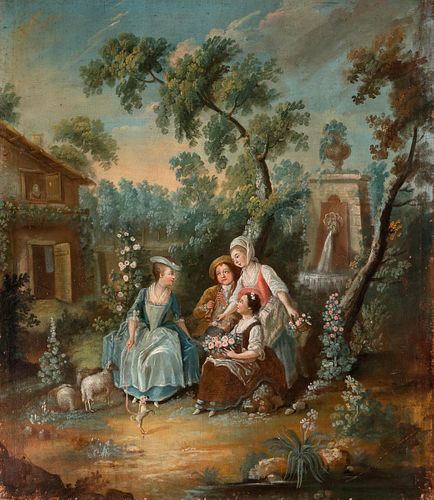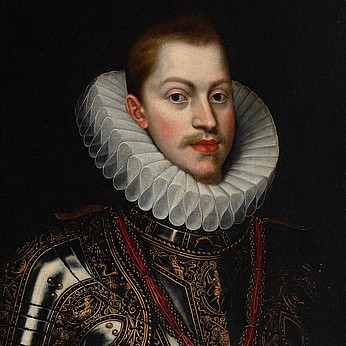Spanish school, following French models; mid XVIII century. "Gallant scene". Oil on canvas.
Lot 37
About Seller
Setdart Auction House
Carrer Aragó 346
Barcelona
Spain
Setdart Subastas was born in 2004 and is currently the first online art auction in Spain with solidity, prestige and reliability guaranteed by our more than 60,000 users. Setdart has a young, dynamic and enterprising team ready to successfully manage the purchase and sale of art works through custom...Read more
Estimate:
EUR€2,500 - EUR€3,000
$2,604.17 - $3,125
Absentee vs Live bid
Two ways to bid:
- Leave a max absentee bid and the platform will bid on your behalf up to your maximum bid during the live auction.
- Bid live during the auction and your bids will be submitted real-time to the auctioneer.
Bid Increments
| Price | Bid Increment |
|---|---|
| EUR€0 | EUR€10 |
| EUR€200 | EUR€25 |
| EUR€500 | EUR€50 |
| EUR€1,000 | EUR€100 |
| EUR€3,000 | EUR€200 |
| EUR€5,000 | EUR€500 |
| EUR€10,000 | EUR€1,000 |
| EUR€20,000 | EUR€2,000 |
| EUR€50,000 | EUR€5,000 |
About Auction
By Setdart Auction House
Nov 24, 2021
Set Reminder
2021-11-24 09:00:00
2021-11-24 09:00:00
America/New_York
Bidsquare
Bidsquare : Old Masters, Day 1
https://www.bidsquare.com/auctions/setdart-auction-house/old-masters-day-1-7873
Setdart Auction House sofia@setdart.com
Setdart Auction House sofia@setdart.com
- Lot Description
Spanish school, following French models; mid XVIII century. "Gallant scene". Oil on canvas. Presents faults, repainting and xylophagous damage. It has a frame of the twentieth century Carlos IV style. Measurements: 111 x 97 cm; 133 x 119.5 cm (frame). In this gallant scene, the author shows us four characters in the center of the composition. Three of them present a greater proximity among them and seem to entertain the fourth one that is in the left zone of the group, slightly separated. The landscape in which they are inscribed is of pastoral character, since it presents a profuse vegetation and some sheep that swirl around the main protagonist. The presence of the house that seems to simulate a farm, added to the elegance of the lady dressed in blue, holding a little dog on a leash, is very reminiscent of Marie Antoinette, who embarked on the construction of a space in the gardens of Versailles called the queen's village. In it she arranged a little house that imitated the aesthetics of the farmers' constructions, and gave shelter to numerous animals, to recreate placidly what she considered a country life, far from the pomp of the court. The scene is set in the eighteenth century, worked with great attention to detail, a strong descriptive spirit and a special care of the play of light and the qualities of the fabrics, following the masters of that century. This type of scenes, with a gallant and hedonistic theme, cheerful and colorful, worked with a precious and descriptive workmanship, were frequent during the second half of the 19th century, within the context of historicism. They belong to the genre called "de casacones" in Spain, and "tableautin" in France, characterized by works inspired by an idealized past, frequently from the 17th and 18th centuries, normally of small or medium format and destined to an eminently bourgeois clientele. One of the first examples of this genre is "Il Contino", by Mariano Fortuny, dated 1861 and preserved in the National Museum of Art of Catalonia.
- Shipping Info
-
In-house shipping available. Please inquire at admin@setdart.com.
-
- Buyer's Premium



 EUR
EUR CAD
CAD AUD
AUD GBP
GBP MXN
MXN HKD
HKD CNY
CNY MYR
MYR SEK
SEK SGD
SGD CHF
CHF THB
THB
















